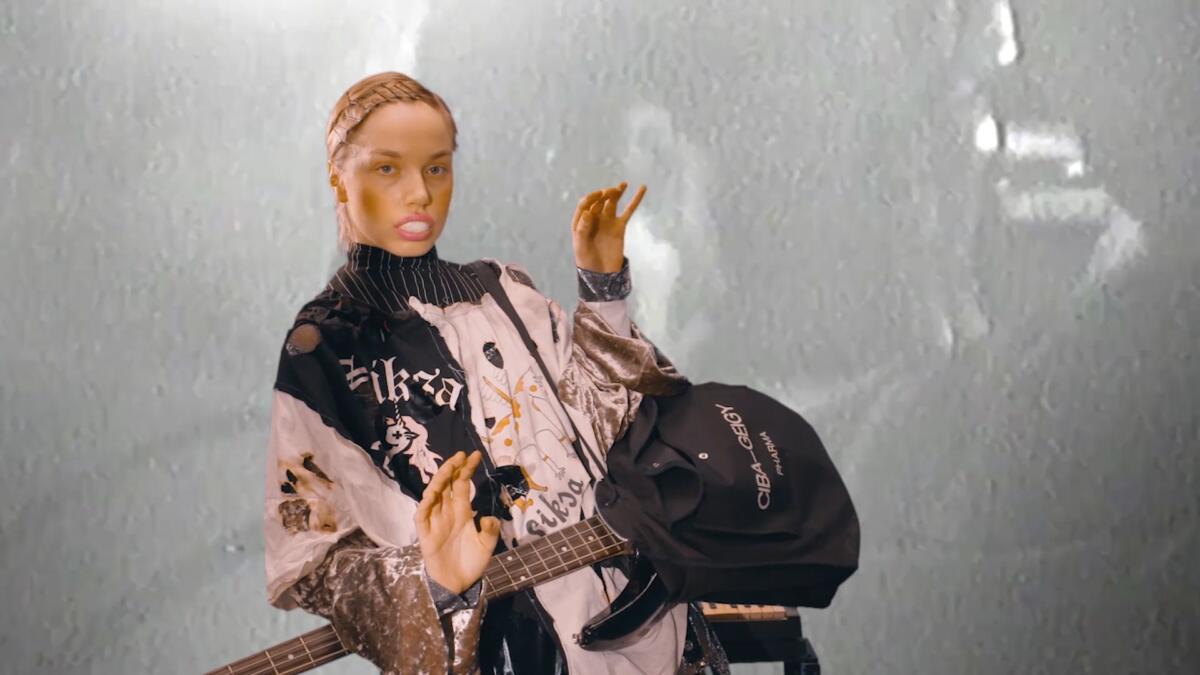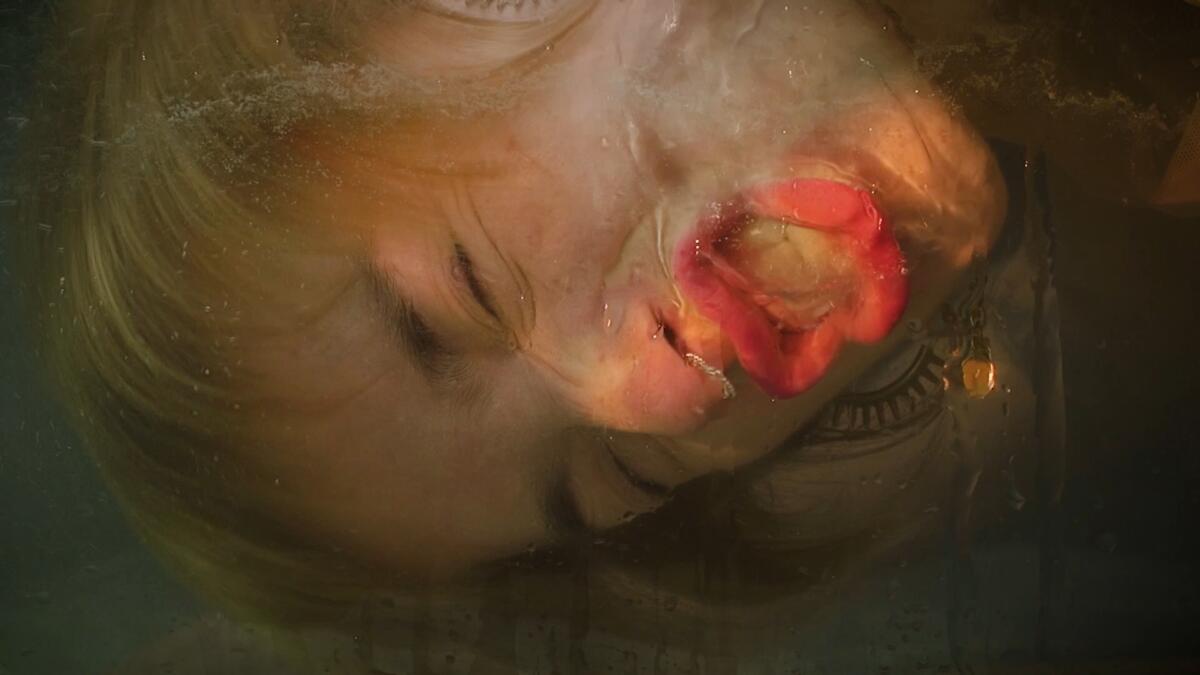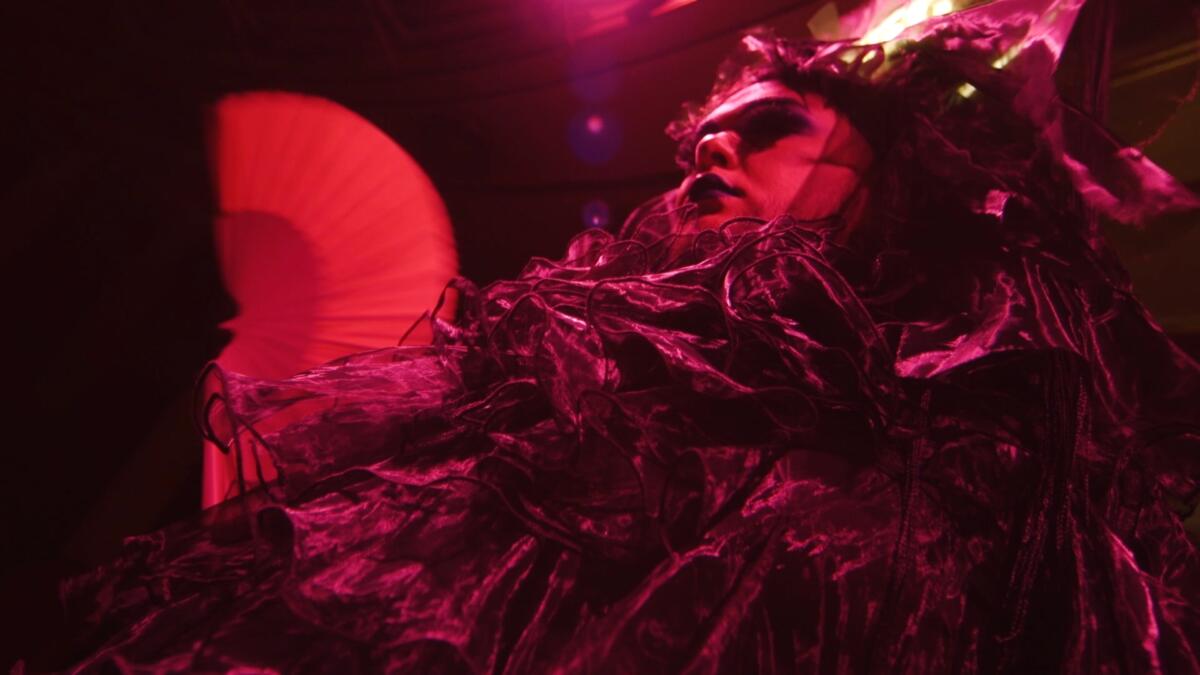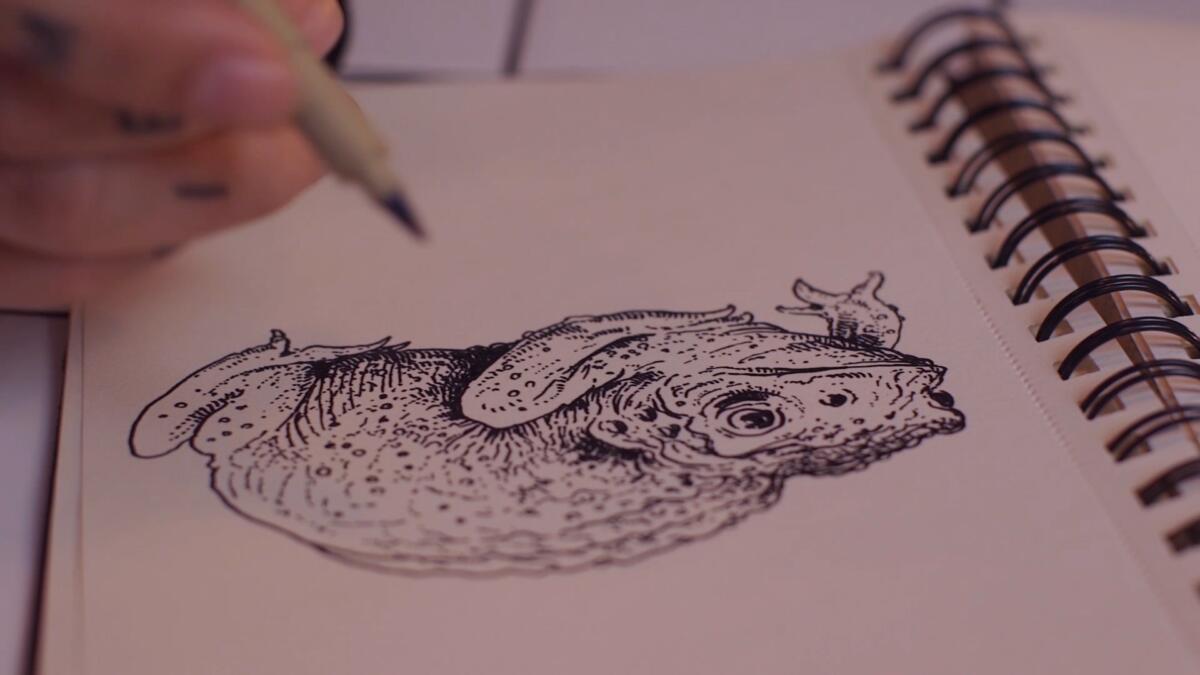ARTIST TAKEOVER: SIKSA – ‘Revenge on the Enemy’

Artist Takeover is a new column where select artists share and promote their work through their own words and images. Here, we don’t ask questions nor demand answers, it’s instead an opportunity to let the work and the artists speak directly to their audience. The column is inaugurated by SIKSA, a Polish feminist, post-punk duo, and their film Revenge on the Enemy, which was produced in cooperation with Piotr Macha.
***
This Sound is Not Available In Your Country
This message, which became the main building block of the film REVENGE ON THE ENEMY has actually accompanied us – SIKSA – since the beginning of its creation. SIKSA is a thing I created together with bassist Piotr Buratyński in 2014. The idea actually came from texts I had written for no one that were gathering dust, and from this very word SIKSA. In Poland, this word which means a non-Jewish girl in Yiddish, functions in colloquial language and describes girls in a patronising way. They are often referred to as “siksa” or “stupid Siksa” or “immature Siksa”. It’s a term used to describe young girls when you want to point out such traits as stupidity, inexperience, childishness, but also when a girl is not polite, is fussy and mouthy. We took this word for all of its blessings and curses, and created a stage character who, with all her wonderful insolence, talked about what was happening in the country of Poland, to finally tell her own story. We were very keen to reclaim the word and take it out of this bag of pejorativity, creating a heroine of everyday life who embarrasses or annoys some, and has a supportive effect on others, amusing them or even evoking catharsis in them. Who would have thought? Such SIKSA? And this is how SIKSA, after a few years of life, decided to perform live with her material REVENGE ON THE ENEMY. We always perform the material live first and only when we feel that it has already swelled with the audience’s reactions and spread its wings in confrontational tenderness – we record it and never come back to it. Never present the material in concert form. We are not a classical music band, armed only with bass and vocals, but we perform as such most of the time, because we believe that music is one of the most important mediums that record stories – in our case herstories.
REVENGE ON THE ENEMY was performed live in late 2017 and early 2018 at various venues. I remember the first concert with this material. I remember the reactions of the people and the energy of each of the encounters with the audience who listened to a story that dealt with violence and rape. We performed it on a street where everyone could hear SIKSA’s cries of despair, but we also wanted to share her strength in fighting for her identity and freedom. Through SIKSA’s form, but also through the topics she raised, there was always a desire to somehow symbolically silence her. Sometimes it happened literally, when a person from the audience tried to snatch the microphone from me, or sometimes it happened through a wave of righteous indignation manifesting itself mainly on the internet, because this is where people pour out their frustrations most often. The strategies of silencing SIKSA were various: from very cultural ones, in critical reviews, to comments written by omniscient opinion leaders, to simply calling her the worst and reducing her whole message to one word: shit. SIKSA’s situation is constantly political. When something happens in this country that makes people talk about violence against women more loudly, then she is taken as an example, which she never wanted to be, because this is not what siksas have in mind.
Regardless of whether SIKSA has been rewarded or reprimanded for her words and actions, she has always done her job, and we consider the slogan THIS SOUND IS NOT AVAILABLE IN YOUR COUNTRY to be unfortunately still relevant even when suddenly the words “FUCK OFF”, which have accompanied the recent revolutionary WOMEN’S STRIKE, is quoted in the newspaper or on television. Aware of how the media works, we don’t push ourselves into the mainstream as much as we could because we know that then SIKSA would only be a 5-minute topic. Her story doesn’t end and doesn’t begin when some topic is more visible and heard. SIKSA also wants to talk about all her doubts and mistakes. And while REVENGE ON THE ENEMY is very much about rape, it is just as much about other pieces of her life that SIKSA notes: the symbolic violence at the Christmas table, the violence of silencing a child’s sexuality, the violence dosed with a small spoon every day into your cereal or coffee.
The recording of our albums is always accompanied by some kind of magical atmosphere connected with the end of a certain stage or with a rite of passage. This one was recorded by Konstanty Usenko (musician, cellist, author of books about Russian counterculture), who was the first to invent how SIKSA should be recorded so that she would retain at least some of the power she might give you during live performances. We recorded the album in Berlin, where Konstanty lives, where the streets became SIKSA’s studio. An underground garage, the subway, hide-outs under bridges, Tegel airport or the former Teufesberg radar towers. The texts were often shouted at night, often drowned out by passing cars, nocturnal city dwellers or the wind. Sound is very important, but there’s an interesting contrast when thinking about how this material was created – mainly in silence, in my head. All the topics mentioned on this album have been living in my head for years. Muted by the millions of stimuli associated with growing up. That’s why only fragments of the album can be heard in the film, and most of the scenes are silent.
For me, however, despite the fact that language is the building block of SIKSA, a lot also happens in the body; head, muscles, cuticles bitten off since childhood or in the teeth that I have been nervously grinding for as long as I can remember. And while for me the words THIS SOUND IS NOT AVAILABLE IN YOUR COUNTRY functioned from the start as eerie poetry that took on a popular internet notice, many of the film’s viewers actually thought that something was wrong with YouTube (where the film is hosted), asking if the footage has been censored, etc. On the one hand, this doesn’t surprise me at all because we live in a world where a lot of things are censored, but on the other hand, I wasn’t ready for such a large amount of messages about the audio layer. It also made me realize that film is still a powerful medium in influencing reality. I was also aware that some people might find it disappointing that the film didn’t illustrate the album in a total way, especially in a year when THE WOMEN’S STRIKE was so long and so fierce. All these histories are recorded on the album, and I don’t like to repeat myself that much. Besides, we very much avoid being on call because SIKSA is not a machine, but a person made of the two of us, who also feels, experiences emotions and fears. She does not only show bravery, but also what is behind the bravery. Burnout, lack of strength, and nervous system illness. We also wanted everyone to be able to put whatever they wanted in the background of the images they were going to see. Maybe it would be our record, or maybe another one, or maybe the sound of the TV coming from the neighbors, Radio Maryja breaking in through the wall, dogs barking, babies crying or the sound of boiling water in a pot. Everyone can also put their own story behind the things the characters say that we don’t hear. This gives a lot of room for interpretation, which is where I have always seen hope. I myself love works that give you the opportunity to dive into the meanderings of your mind, stretching a given work to gargantuan proportions.
While we leave a huge amount of space for interpretation to the viewer, there is a certain structure in the flow of thought and meaning in our film. It is based on the theories of Alejandro Jodorowsky, which he expounds on in his books and in other forms. It’s all about psychomagic. As a big fan of his films, I also started reading his books. I was quite skeptical about them at first, but in the last year a lot has changed. Not that I started doing magic, but these books allowed me to move into a completely different state of mind during a year where the amount of stimuli has exploded beyondany knowable scale. The psychomagical acts that Jodorowsky describes in his books may seem funny and ridiculous, like when a person comes to him and asks for advice on, for example, excessive cursing, and he orders them to eat a toad in public. The idea itself can be taken literally, but it seems to me that it is more about treating it symbolically. A bit like in creative exercises: don’t look for the effect, but invent and observe the way you choose to get this effect or to modify it. Whatever you need. Anyway, the director himself in his films does nothing else but practice his invented psychomagic, which helps him to survive, and gives the audience a fever of images ready for individual perception. This is also what happens in our film. The heroine saves herself by performing a series of such psychomagical acts. I will describe only one of them:
In one of the scenes, the heroine exposes her teeth. It turns out after a while that these are false teeth, which she pulls out with pliers and then buries in the ground, bathed in honey, together with the hand of one of the characters she meets at the beginning of the film, who for us is a variation on Jodorowsky. She may have just been given this psychomagical advice earlier: pull your teeth and bury them along with the hand of a person you associate with change. Then water them with honey, and plant a lavender flower over them. For us, that scene has another meaning because white teeth is a motif that recurs throughout REVENGE ON THE ENEMY. It even persecutes the heroine, because her mother is obsessed with her daughter’s boyfriend’s white teeth and punishes her for not having such teeth and having instead only teeth yellow from smoking cigarettes. That’s why these teeth, which the heroine insolently mocks, are important to us.
The viewer does not need to know everything we had in mind when making this film, together with Piotr Macha. We believe that the silence we have chosen will appeal to people who, like us, are overloaded with stimuli. We believe that we are not a music band that is supposed to deliver only words and sound, because we want to share with people every stage of SIKSA’s life, evenwhen she disappointingly wants to be silent. And REVENGE ON THE ENEMY is just another step in her life, which sums up and closes this certain stage. A stage in which SIKSA superheroically screamed from the stage about rape and fought for her individual voice and autonomy, a process or even a psychomagical act that SIKSA has to renew at least from time to time, lest she forget completely why she needs this whole art thing. And REVENGE ON THE ENEMY speaks precisely about this whole art thing as a psychomagical act, in search of one’s freedom. Because art for SIKSA is unfettered freedom. Maybe that’s naive, but in the end it’s just SIKSA.
Imprint
| Artist | SIKSA (Alex Freiheit i Piotr Buratyński) |
| Index | Alex Freiheit Konstanty Usenko Piotr Buratyński Piotr Macha SIKSA |





